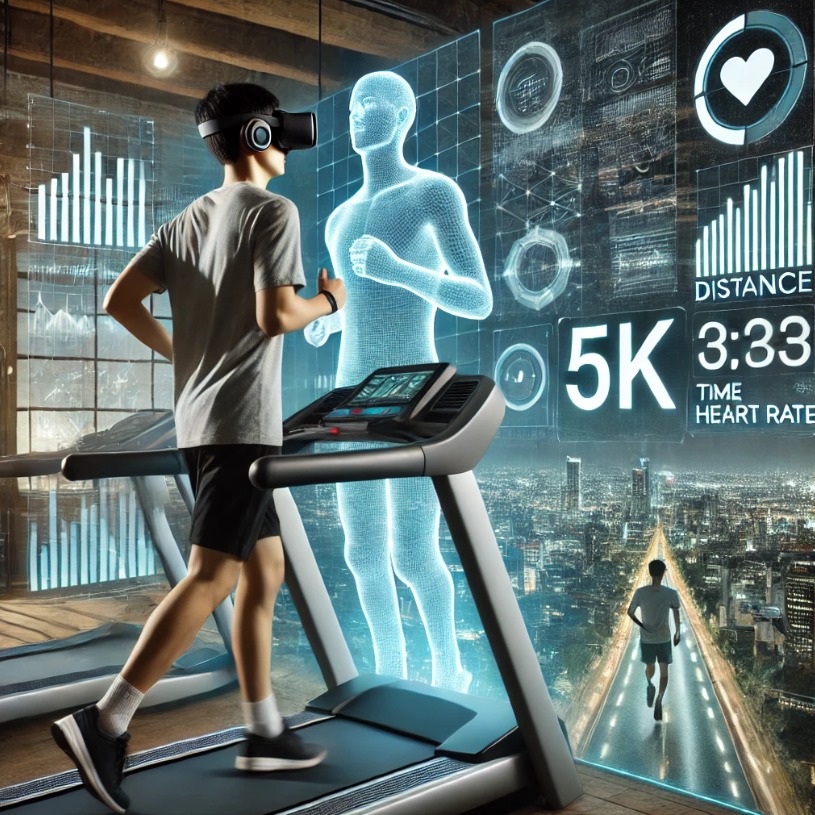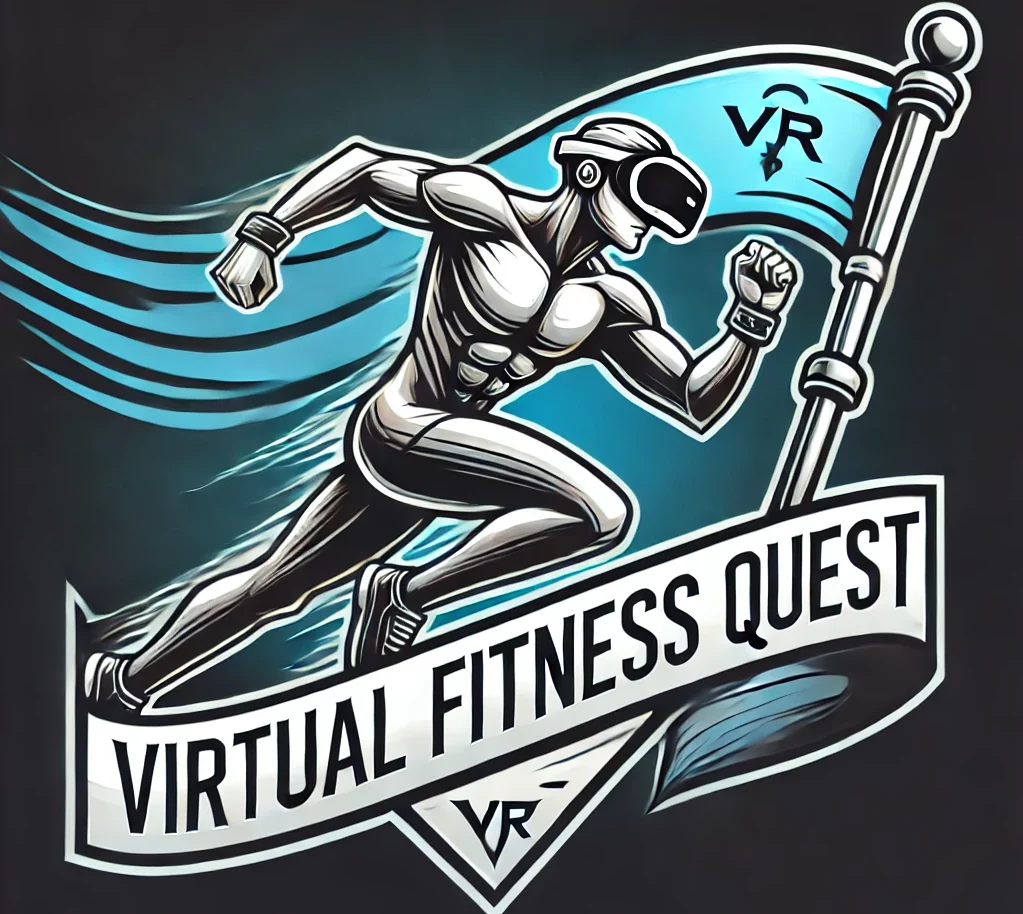
From Couch To Virtual 5K: Training For Races In VR
Last Updated on: 21st March 2025, 02:46 pm
This article contains affiliate links, meaning I may earn a commission if you click through and make a purchase. As an Amazon Associate, I earn from qualifying purchases. This comes at no additional cost to you. I only recommend products or services that I believe will provide value to my readers, based on personal experience or thorough research.
Intrigued by the blend of physical activity and technology? Virtual reality has opened doorways to creative ways to build endurance and prepare for races. Transitioning from a sedentary lifestyle to running a virtual 5K has become a practical goal for many. This article explains how you can move from couch-bound relaxation to engaging in virtual race training using VR. My aim is to guide you through the necessary tools, a straightforward training plan, and the important factors to keep an eye out for when you start. With a solid plan, you can gradually turn everyday exercise into an engaging virtual adventure. Let’s dive in and see how technology can give a boost to your overall fitness routine.

Essential Tools for Virtual Race Training
Starting any virtual race training plan relies heavily on having the right equipment. A VR headset is not just a single gadget; it forms part of a coordinated system that includes motion tracking sensors and a reliable training platform. A good combination of a stable headset, accurate sensors, and supportive software makes it easier to simulate a realistic racing experience. Many VR apps work with a variety of devices, so be sure to check that your equipment is compatible with the training programs you plan to use.
Some advanced setups offer dedicated VR treadmills, but there are also budget-friendly alternatives available that make effective use of your available space. When preparing your training area, ensure you have enough room to move freely and safely. Using markers or establishing clear boundaries on the floor can help prevent accidental collisions. Balancing cutting-edge technology with personal safety is really important for ensuring each workout is both effective and safe.
Getting Started With VR Race Training
Before you jump into full-scale training, it’s important to familiarize yourself with your equipment and the virtual environment. Begin by properly setting up your VR headset and fine-tuning the sensors using the guidelines provided by the manufacturer. Online guides and user manuals are practical resources as you learn the basics of the system.
Many virtual race applications include beginner-friendly modes designed to ease you into the experience. Starting with simple sessions not only builds your confidence but also gradually boosts your stamina. Early workouts typically use simulated courses that replicate flat terrains before you step up to more challenging routes with inclines or variable paths. Spending time practicing in a comfortable space provides a strong foundation for more extensive training sessions down the line.
Key Components and Terminology
Understanding the essential components of VR race training is key to making the most out of each session. At the heart of the experience is the VR headset, which displays the immersive race course. Motion tracking sensors capture your movements in real time, translating them into actions within the virtual world, while training software records your progress and provides useful metrics. A handheld controller helps you navigate menus and adjust settings when necessary. Lastly, having a dedicated space—whether you are using a treadmill or a clear open area—is essential for maintaining safety and consistency. Each of these elements works together to create an interactive training environment that motivates you to keep moving forward.
A Quick Guide to Transitioning to Virtual Racing
Planning your move from a sedentary routine to virtual race training can be straightforward if you have a clear game plan. First, assemble your VR system and ensure every component is properly connected and fine-tuned. Installing the necessary software and exploring the available menu options is a good starting point. Next, select a beginner-friendly app that offers a smooth introduction with simple courses tailored to those just starting out.
Establishing a consistent routine is also very important. Dedicate specific times in your day to training sessions and begin with short, regular workouts. Use the tracking features in your training software to record key metrics like pace, distance, and heart rate. These figures help you measure your progress over time. Finally, gradually increase the intensity of your sessions. Starting with 10- to 15-minute workouts can eventually build up to the endurance needed for a full virtual 5K.
Important Considerations for Virtual Race Training
Every training plan has its challenges, and being aware of potential difficulties can help you avoid setbacks. One of the most crucial factors is ensuring you have a sufficient and clear space that is free from obstacles. A dedicated area not only minimizes the risk of injuries but also makes it easier to focus on your workout.
Safety measures, such as setting out workout mats or padded flooring, are very important if you plan to run in a confined space. Another aspect to keep in mind is potential latency issues. If your VR system occasionally lags behind your movements, calibrate the sensors or perform system updates to speed things up. Lastly, a stable power supply and strong connectivity are essential for uninterrupted training. Checking cables and connection points beforehand can help avoid sudden disruptions during your session.
Advanced Training Tips and Tricks
Once you have mastered the basics, there are several advanced tips you can adopt to take your training up a notch. First, tap into your training app’s data-driven feedback to analyze metrics such as pace, heart rate, and calorie burn. These insights are very important for adjusting your routines and maximizing performance.
Second, consider customizing your virtual environment by switching between different scenic routes. Alternating your background can keep the experience fresh and boost your motivation. Third, incorporate interval training into your workouts. Mixing short bursts of high-intensity exercise with slower recovery periods is a proven method to build endurance and speed. Finally, get involved in multiplayer challenges where you can compete with friends or fellow enthusiasts. Friendly competition can push you to perform better and stay committed to your training program.
Focus for Beginners
For those just starting out, building a strong yet simple foundation is key. Begin with short training sessions that gradually increase in duration as you become more comfortable with the VR system. Investing in quality gear helps ensure that your workouts run smoothly without unexpected interruptions. In addition, make use of online tutorials and community advice to help navigate any early challenges.
Creating a dedicated, safe training space is also essential. A clutter-free area with clear boundaries sets the stage for an effective workout environment. Remember, small improvements accumulate over time, and the regular effort you put in will lead to noticeable progress. Keeping your training routine simple at first allows you time to adapt before introducing more complex exercises or longer sessions.
Frequently Asked Questions and Final Thoughts
Here are some common questions and straightforward answers for new virtual racers.
Question: How do I choose the right VR setup for race training?
Answer: Start by reading user reviews and ensuring the system is compatible with your preferred training apps. Begin with a basic setup and upgrade as you gain more experience.
Question: What can I do to keep my training area safe?
Answer: Clear a sufficient space, use workout mats, and mark boundaries to reduce the risk of injury.
Question: How can I track my progress effectively?
Answer: Use built-in tracking features to measure pace, distance, and heart rate, which help you adjust your training for continuous improvement.
Question: How does interval training help in VR workouts?
Answer: Alternating periods of intense exercise with recovery helps build stamina gradually.
Wrapping up, transitioning from a sedentary lifestyle to participating in virtual 5K races is not just about physical exercise. It is about embracing new technology, following a clear game plan, and steadily building improvements over time. With determination and the appropriate tools, every workout becomes a step toward better health. It’s time to set up your equipment, plan your training schedule, and kick things off on an exciting path to improved fitness. Enjoy the immersive experience and trust that every small effort contributes to a healthier, more active life.

Leave a Reply